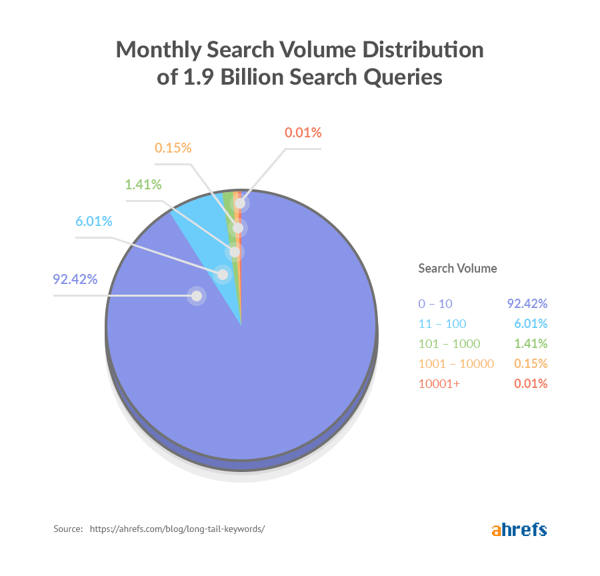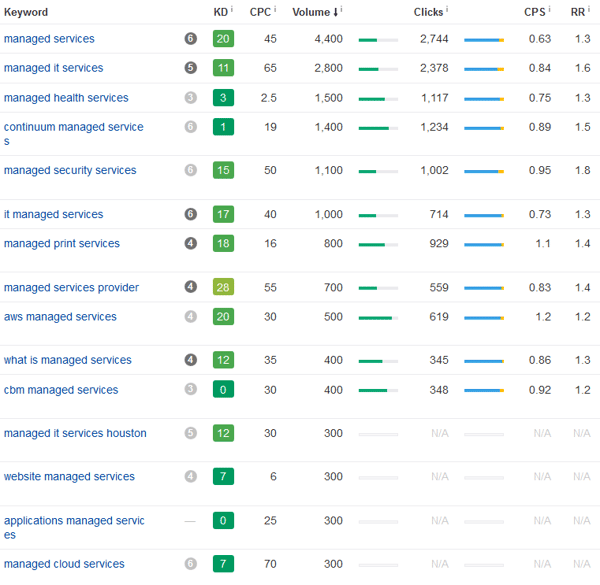
There are literally dozens of ways to increase website traffic. I’ve already touched on how to do keyword research to craft the perfect blog title. This post is going to expand on that to include your entire website.
Sounds daunting, doesn’t it? Don’t worry. While it is rather time intensive depending on the size of your site, the steps are so easy, even a caveman could do them.
/tenor-gif.gif?width=498&name=tenor-gif.gif)
The nice thing about using targeted keywords to drive traffic is that it’s a relatively “set it and forget it” thing. I’m not saying you shouldn’t continue to optimize your website and blog with current keyword research. What I’m saying is search volume evolves relatively slowly in most niches. Therefore, you should be able to get a good six months or more out of a piece of content before it is due to be revisited and updated with new and more relevant content.
To see search volume over time, take a look at Google Trends. It’s not as detailed as the keyword planner, but my sources at Google (a.k.a, Google Ads Support) tell me the numbers it shows are more accurate. Why this is, I don’t know, but that’s what they tell me.
Also, if you're down to invest in a premium tool, I highly recommend Ahrefs. Their keywords explorer alone is well worth the price of admission. That's the section I spend most of my time using - and site explorer.
That said, here’s how you can determine what keywords you should be targeting and how to go about looking up search volume for them.
1.) Make a List of Keywords for Your Website
This doesn’t have to be anything fancy. It can even be handwritten. It will take some time though. Set aside a few hours in your schedule to go through each page of your website. Write down keywords that seem to occur across several pages. Shoot for 15-20 keywords per 100 pages of content.
If you see something you’re not sure about, write it down anyways. You can always scratch it off later.
A good place to find keywords is your main navigation. Page names and their associated titles (the text you see in the browser toolbar) are usually laden with descriptive text about the content of those pages.
2.) Make a List of Keywords You’d Like to Rank For
Think about what your buyer persona will be searching for. What questions are they asking? What answers can you provide them? Where are they at in their buyer’s journey?
Does the content on your website and/or blog accurately match the terms in your new list?
If this is your first time doing this, you’ll likely see some big discrepancies between what your website is actually ranking for and what it needs to rank for.
Time to start making changes!
3.) Do a Google Search for Each of the Keywords You’d Like to Rank for
Or, plug them into Google Trends. Or Ahrefs. Or all three if you're really into it.
If you have a mega-long list, narrow it down into like categories, i.e., group similar keywords together and then find a common theme among the group.
For example, our website is optimized for a lot of things, but mainly our focus is on the term “inbound marketing agency.” That’s a summation of most of our keywords on our website. You’ll probably find a similar theme for your website.
You'll quickly see a few key topic bubble to the surface. That's the gold you're looking for. Today, SEO content writing is about topics more than ever before. Users looking for your product or service are going to look for the same thing, but in hundreds or thousands of different ways. It's those search variations - or long tail keywords - that matter. Did you know that over 92 percent of all searches have less than 10 searches per month? You read that right. Over 92 percent:
 Most marketers focus on keywords with thousands of searches per month, not realizing that they're leaving easy pickings on the table.
Most marketers focus on keywords with thousands of searches per month, not realizing that they're leaving easy pickings on the table.
4.) Run them through a Keyword research Tool
I cannot stress enough the importance of knowing how often your list of terms is searched on Google. Whether you use their keywords explorer, or a more robust paid service, this step is one of the most important. It will give you a good idea of which keywords topics to focus on. I say topics because of the simple fact that there are literally thousands of ways to search for the exact same thing. For example, let's look at a topic one of our clients focuses on: Managed Services. When I run that term through Ahrefs, here are all of the other terms that appear:

That's just the first fifteen on the list of over 12,600 related queries. And these are just the exact match searches - meaning the exact term shown above is what users searched for. Within each of those there are several possible variants.
You’ll need to use your intuition here to decide which terms work best. Think back to your persona and where they are in the buyer’s journey. Make sure you’re optimizing for terms your ideal customer is searching for; not for terms you want to rank for to feel better about your website.
5.) Make the Necessary Changes
This might take some time depending on how big your site is. It’s well worth it though. A large time investment up-front will pay dividends down the road.
Your website is where the real magic happens – but you need the traffic before the magic can happen. Once you get people to your website, it can do the heavy lifting with targeted blog posts, landing pages, and offers behind submission forms.
Eventually, your website will reach a tipping point where it becomes a 24/7 salesperson. Attracting, engaging, and delighting. Ah, the inbound marketing methodology. It tastes so sweet.
6.) Review Every 6 Months or So
It’s always a good idea to review your website content on a regular basis. SEO tactics change, keywords change, and search volumes change. Google wants people to find your website, but you need to provide Google great content to index using the topics your potential customers are searching for.
You can make Google’s job easier by putting in a little elbow grease every now and then. Keep your website content up-to-date. It’s well worth the effort.
"But I don't have time for any of this..."
You’re right. It is a daunting task. Many marketing directors don’t have enough day left at the end of the time to accomplish everything on their to-do list. Especially since this post is just the tip of the iceberg when it comes to optimizing for good keywords. There are hundreds of other tactics you can and should be doing on a regular basis. However, if you follow the six tips listed above, your website will be miles ahead of your competition.
If you need some help, look for an inbound marketing agency to be your partner. You can’t possibly be the expert in all aspects of marketing. So get help where you need it; if you have the right partner, the investment will pay for itself.